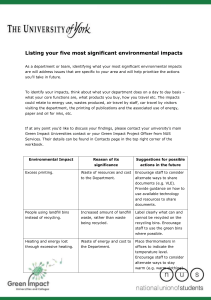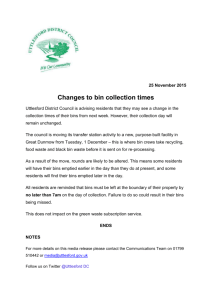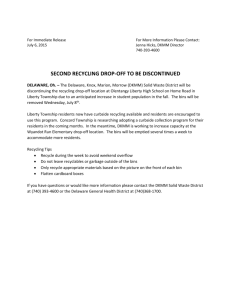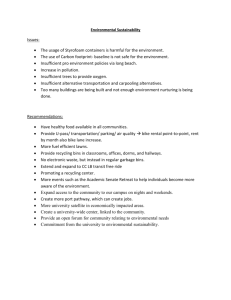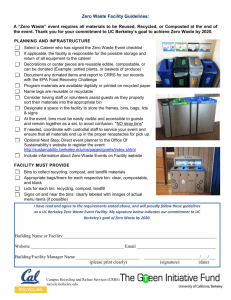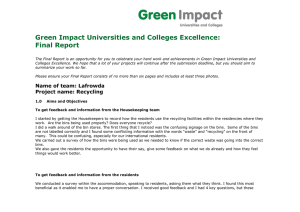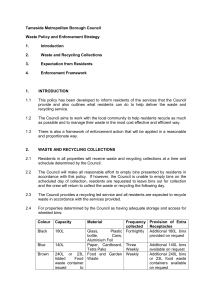55 kb doc - Radical Geography
advertisement
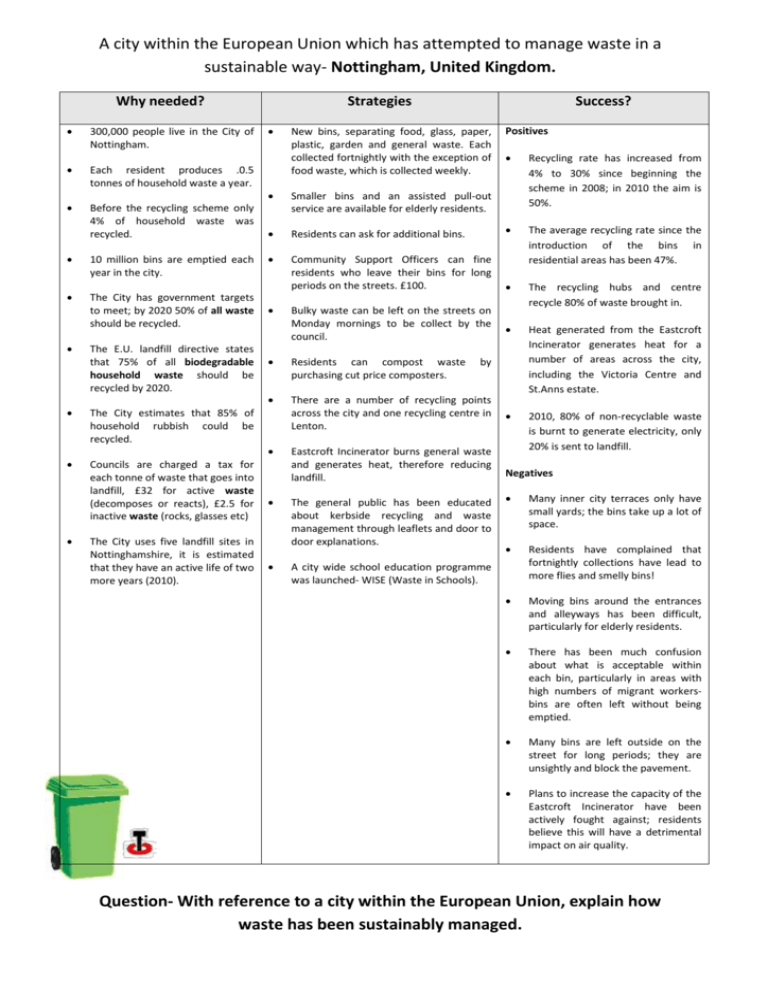
A city within the European Union which has attempted to manage waste in a sustainable way- Nottingham, United Kingdom. Why needed? 300,000 people live in the City of Nottingham. Each resident produces .0.5 tonnes of household waste a year. Before the recycling scheme only 4% of household waste was recycled. 10 million bins are emptied each year in the city. The City has government targets to meet; by 2020 50% of all waste should be recycled. The E.U. landfill directive states that 75% of all biodegradable household waste should be recycled by 2020. The City estimates that 85% of household rubbish could be recycled. Councils are charged a tax for each tonne of waste that goes into landfill, £32 for active waste (decomposes or reacts), £2.5 for inactive waste (rocks, glasses etc) The City uses five landfill sites in Nottinghamshire, it is estimated that they have an active life of two more years (2010). Strategies Success? New bins, separating food, glass, paper, plastic, garden and general waste. Each collected fortnightly with the exception of food waste, which is collected weekly. Positives Recycling rate has increased from 4% to 30% since beginning the scheme in 2008; in 2010 the aim is 50%. Smaller bins and an assisted pull-out service are available for elderly residents. Residents can ask for additional bins. Community Support Officers can fine residents who leave their bins for long periods on the streets. £100. The average recycling rate since the introduction of the bins in residential areas has been 47%. The recycling hubs and centre recycle 80% of waste brought in. Heat generated from the Eastcroft Incinerator generates heat for a number of areas across the city, including the Victoria Centre and St.Anns estate. 2010, 80% of non-recyclable waste is burnt to generate electricity, only 20% is sent to landfill. Bulky waste can be left on the streets on Monday mornings to be collect by the council. Residents can compost waste purchasing cut price composters. There are a number of recycling points across the city and one recycling centre in Lenton. by Eastcroft Incinerator burns general waste and generates heat, therefore reducing landfill. The general public has been educated about kerbside recycling and waste management through leaflets and door to door explanations. A city wide school education programme was launched- WISE (Waste in Schools). Negatives Many inner city terraces only have small yards; the bins take up a lot of space. Residents have complained that fortnightly collections have lead to more flies and smelly bins! Moving bins around the entrances and alleyways has been difficult, particularly for elderly residents. There has been much confusion about what is acceptable within each bin, particularly in areas with high numbers of migrant workersbins are often left without being emptied. Many bins are left outside on the street for long periods; they are unsightly and block the pavement. Plans to increase the capacity of the Eastcroft Incinerator have been actively fought against; residents believe this will have a detrimental impact on air quality. Question- With reference to a city within the European Union, explain how waste has been sustainably managed.

